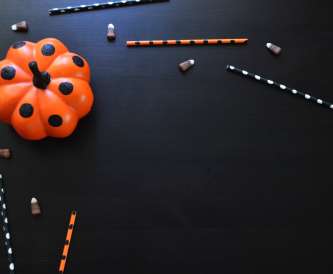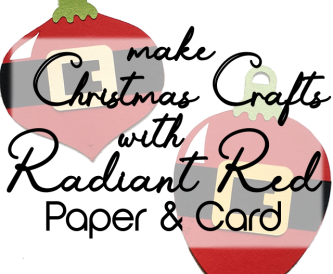Myth Busting: Paper
1
Posted on 10th August 2018 by Emily
Filed under Papermill Direct News
Myth no. 1 - buying paper and paper packaging destroys forests
Wait, that’s just not true!
Industries that depend on trees need thriving forests. It’s in their own self-interest. In managed forests, for every tree cut down, three to four are replanted in its place. It’s estimated that there are 25% more trees in the developed world today than there were in 1901, and in Europe alone, forests are increasing annually by an area equivalent to more than 1.5 million football pitches. It sounds counter intuitive but it’s a fact - paper makes trees. The demand for paper drives growth of the forests. That’s the beauty of a renewable resource.

Myth no. 2 - old trees are the best carbon sinks...
Think again!
Next time you have your friends over for dinner tell them this:
For every tree that is logged in managed forests, three to four trees are replanted. And as young trees grow, they absorb CO2 from the atmosphere. Common sense might tell you that the bigger and older the tree, the more carbon it absorbs. But you’d be largely wrong. In fact, young forests are much more efficient at absorbing carbon than old forests. Mature trees absorb carbon more slowly the older they get. In addition, as they get older trees start to naturally decompose, which releases carbon and other greenhouse gases back into the atmosphere.
So to maximise the carbon storage that trees can provide, we need young healthy forests where trees are regularly harvested and re-grown. But the benefit doesn’t stop there because, as a wood product, paper also continues to store carbon throughout its lifetime.
Myth no. 3 - making paper and paper packaging requires too much energy...
Let’s set the record straight…
It’s true that making paper requires energy, but paper making is a very efficient user and producer of energy. If you look more closely at the evidence, you’ll discover some surprisingly small statistics about paper and energy...
The forest-based sector is the least fossil fuel intensive of any manufacturing sector and the paper industry is the largest single consumer and producer of renewable bio energy in Europe. More than half of the industry’s total primary energy consumption is based on biomass. As industries go, paper making is a large-scale undertaking and you’d expect it to generate some frightening statistics. It doesn’t. On average it takes 500 kilowatt-hours (kWh) of electricity to produce 200kg of paper, the average amount of paper that each of us consumes each year.
Does 500 kilowatt-hours sound a lot?
It’s equivalent to burning a 60w light bulb continuously for one year.
Myth no. 4 - paper and paper packaging has a high carbon footprint...
Just about everything has a carbon footprint.
So let’s compare shoe size, shall we?
Producing 200kg of paper, the average we each use every year, creates between 130 - 250kg of CO2 depending on the source of energy. That’s comparable to the CO2 produced by an average family car over a distance of 960km. In fact an article in the Times Online highlighted a study by a Harvard University Physicist which revealed that a complex on-line Google search lasting several minutes can generate an estimated 5-10g of CO2. Bear in mind that boiling the kettle for a cup of tea generates 15g of CO2. Even your steak dinner tonight has a footprint! Beef and veal have the biggest carbon footprint of all meats - and let’s not forget methane, another greenhouse gas. Flatulent farm animals are responsible for 14% of all methane emissions - that’s a yeti-sized footprint. Could you imagine living in a society that told you to “consider the environment before you Google search” or “eating steak damages the environment” - that sounds too much like Big Brother, right! And yet most e-mails in circulation today load you with environmental guilt if you contemplate pressing the print button. It’s time to be more honest with ourselves. Carbon footprints are everywhere. Deciding on our own is a lifestyle choice. But it’s better to be fully aware of all the facts in order to make the best choices.
Myth no. 5 - paper-based packaging is an unnecessary waste!
Packaging isn’t everything, but it ranks up there with oxygen.
The fact is that paper-based packages and containers are part of our everyday lives, so it can be easy to forget what makes them unique.
So let us refresh your memory for you.
Unlike other packaging options, paper-based packages are made from trees, a completely renewable source. Practically speaking, because paper-based packaging is 100% recyclable and over 80% of corrugated packaging is collected and recycled, it is beyond any reasonable doubt the most sustainable and responsible choice for business and consumers alike.
Or, as we like to say in the industry, paper-based packaging leads to waste prevention.
So, Use after Use after Use and then repeat...

Myth no. 6 - reuse is better than recycling...
How on earth did we arrive at this point?
The European Union’s policy emphasis in the environmental field is mainly focused on climate change at the moment. Yet waste management continues to be a priority.
However, in the 1980s and 1990s, environmental NGOs convinced politicians at EU and national level that re-use of a product is almost always better than recycling. In some areas our competitors in the plastics packaging arena have turned this to good effect. They argue successfully in the marketplace that their re-usable crates are more in line with EU policy goals than corrugated trays. Their sales have expanded.
The Myth: Even low cost returnable plastic packaging is much more sustainable than one-way cardboard...
Yet empty plastic crates are returned for refilling by road transport, often over very long distances, generating needless CO2 emissions. They then require washing with hot water and chemicals to sterilize them, generating yet more CO2.
The current EU focus on climate change policy is a window of opportunity to redress the imbalance by promoting more recyclable corrugated trays over plastic crates.
Myth no. 7 - the industry is doing nothing about illegal logging!
That’s utter nonsense and completely wrong.
The European paper and paper-based packaging industry already sources fibre responsibly. The industry firmly condemns illegal logging and has implemented a Code of Conduct on legal logging. The industry also supports all credible certification systems and the percentage of certified raw material used by the industry is 55%.
Half of the EU’s forests are already certified and 92% of forests owned by paper companies are certified*; the industry’s commitment to responsible sourcing is clear and beyond any reasonable doubt.








1 thought on “Myth Busting: Paper”
Gail Connor
19th August 2018 at 1:53 p.m.
This is interesting. I would also add that paper packaging is safer for wildlife - you never hear of whales dying with stomachs full of cardboard, or hedgehogs getting stuck inside paper bags, yet plastic waste causes many animal deaths and much suffering.